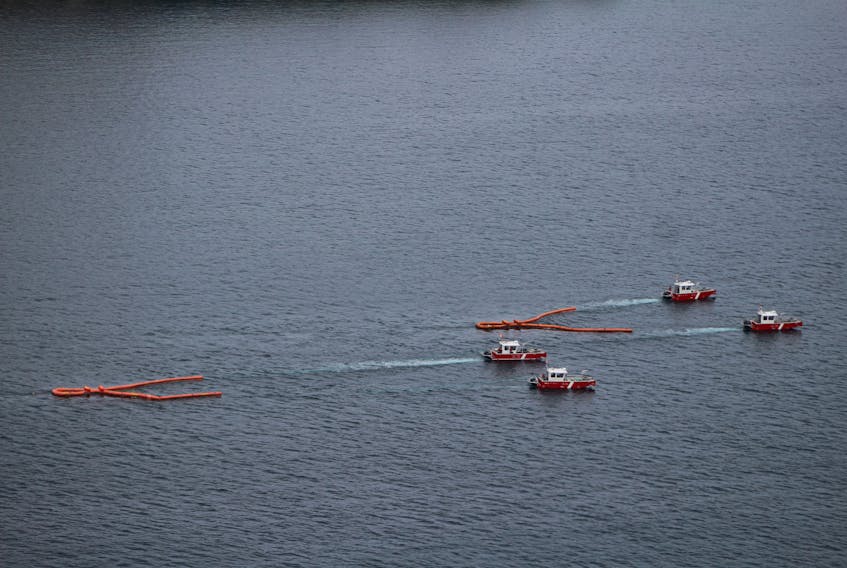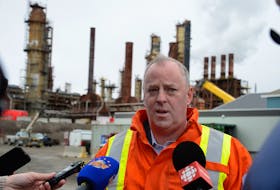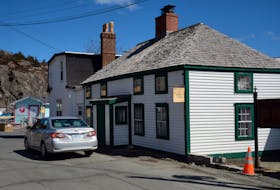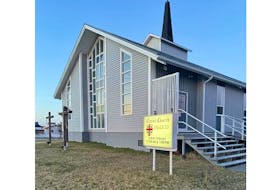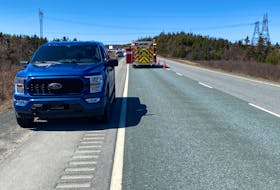HERRING NECK, N.L. - With 145 people, more than a dozen vessels and all kinds of cleanup equipment in place, crews were preparing Tuesday to start pumping the oil out of the Manolis L, which sank in Notre Dame Bay in 1985.

“This is not a common occurrence for the Canadian Coast Guard,” Anne Miller, regional director of incident management for Coast Guard Atlantic, but more specifically, incident commander for this operation, said Tuesday, Aug. 7.
“This is new, and it’s new in the salvage business that you’re doing it at such depths, at these temperatures, using ROV.”
The Manolis L, a paper ship outbound from Botwood, ran aground on Blow Hard Rock in January 1985 and sank in about 70 metres of water. It was carrying about 463 tonnes of heavy fuel and 60 tonnes of diesel. In March 2013, reports started coming in about oil on the water near Change Islands, as well as on wildlife.
Carolyn Parsons, co-chair of the Manolis L Citizens Response Committee, was sent a photo of her niece holding a bird covered in oil and that’s how it all started for her.
“It’s a huge relief that this is happening,” Parsons said. “We’ve been emailing back and forth and talking as a committee, and we’re thrilled.”
The group has been pushing the government to get the oil out of the Manolis L for years, but now their role is to sit back and trust the experts, Parsons said.
As Miller said, however, this is a new situation for even those experts. About five years ago, the Brig.-Gen. M.G. Zalinski, an American army transport that sank in 1946, was divested of her oil off the coast of British Columbia. Before that, a barge called the Irving Whale was raised whole in the mid-1990s, after causing problems off the coast of Prince Edward Island for 26 years.
The Canadian Coast Guard undertook an assessment operation on the Manolis L wreck in 2016 and has been monitoring and mitigating the leakage for the past two years.
“They have a lot of information to use to make this a success,” Parsons said. “Now we just let them work, and watch the weather.”

Conditions on Tuesday were almost perfect as contractor Ardent Global worked to place beacons along the sunken vessel with a remote operated vehicle (ROV), which will be used instead of divers. Miller said they expect to begin pumping oil out of the Manolis L in the next few days and anticipate being done by early September.
Related stories:
- IN DEPTH: Oil to be removed from Manolis this summer
- Coast guard survey of Manolis L finds no oil
- Contract awarded for oil removal from Manolis L near Change Islands, N.L.
- Coast Guard removes 500 litres of fuel from Manolis L site (2017)
The process involves pushing steam into the 14 tanks that have been identified as containing anything from a trace to a bulk amount of fuel (from 115,000 to 150,000 litres in all) to heat the oil from 2 C to about 10 C so it will move more easily through the pipes to the surface.
From there, the oil and water will be separated until the latter contains 15 parts per million (ppm) oil, which is considered the standard. The remainder will then be removed and disposed of safely.
While there is an increased risk of a leak during this process, Miller is confident there are more than enough resources on site to handle any eventuality.

“We’ve assessed the potential of release, knowing what we know about what’s down there, and knowing what we need in place to address that and mitigate any impact to the shoreline. That’s why you see all the equipment that we have here now,” she said.
“Once that’s all done, which it has been, my level of comfort is good. We’re prepared. We’re ready. We’ve got good equipment on site, and good people, and lots of them.”
Parsons said the committee is also aware of the risk, but noted the oil is going to come out one way or another. She would much rather it happen under the best conditions possible and the watchful eyes of the Coast Guard than during a storm in the middle of February.
“This is what we were working for,” she said. “That the oil be removed, and now it is.”
This summer's operation, by the numbers
1 Canadian Coast Guard Ship (CCGS) Earl Grey
9 Pollution Response Vessels
5 large on-water sweep systems
2 safety vessels
4 pumping systems
27 personnel on the CCGS Earl Grey
32 on-water response personnel
26 personnel in Incident Command Post in Twillingate
55 on board contractor vessel, Tidewater Enabler
$15,106,400 contract awarded to Ardent Global LLC

